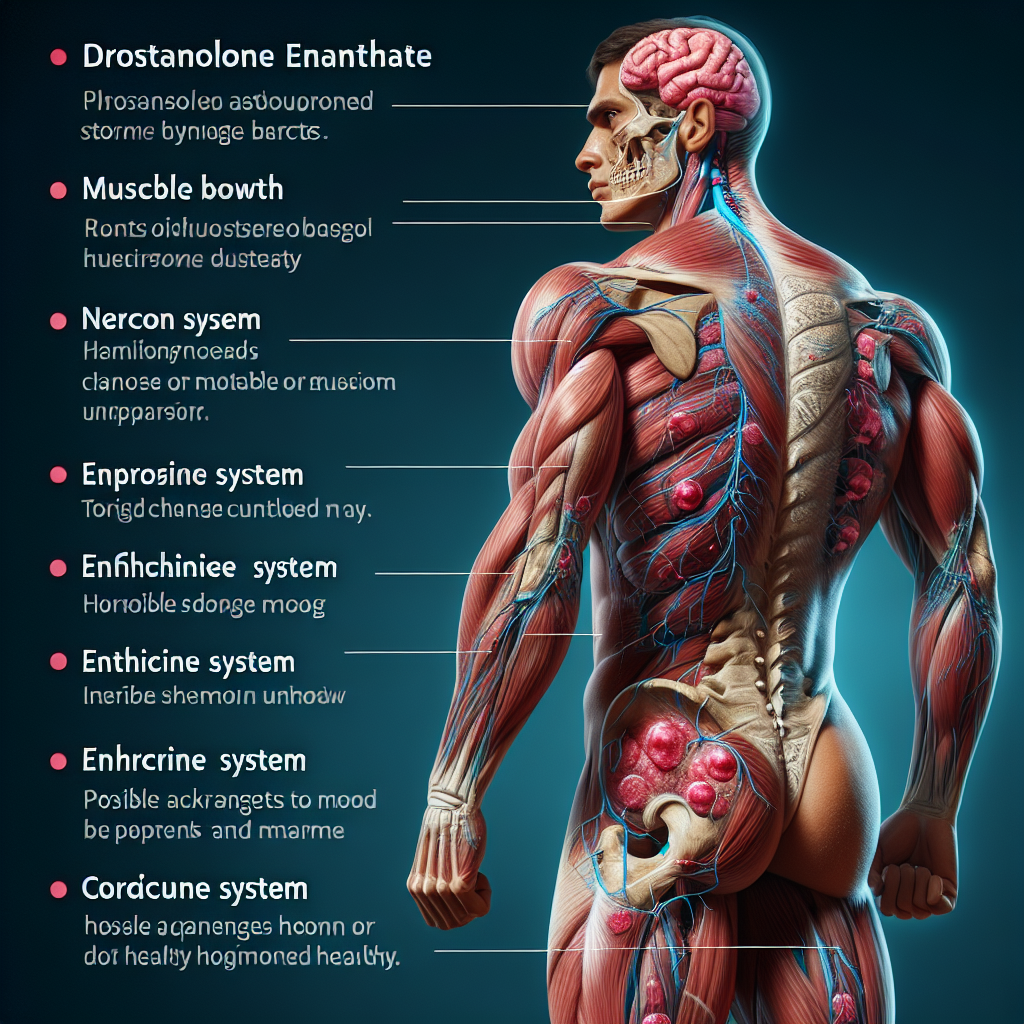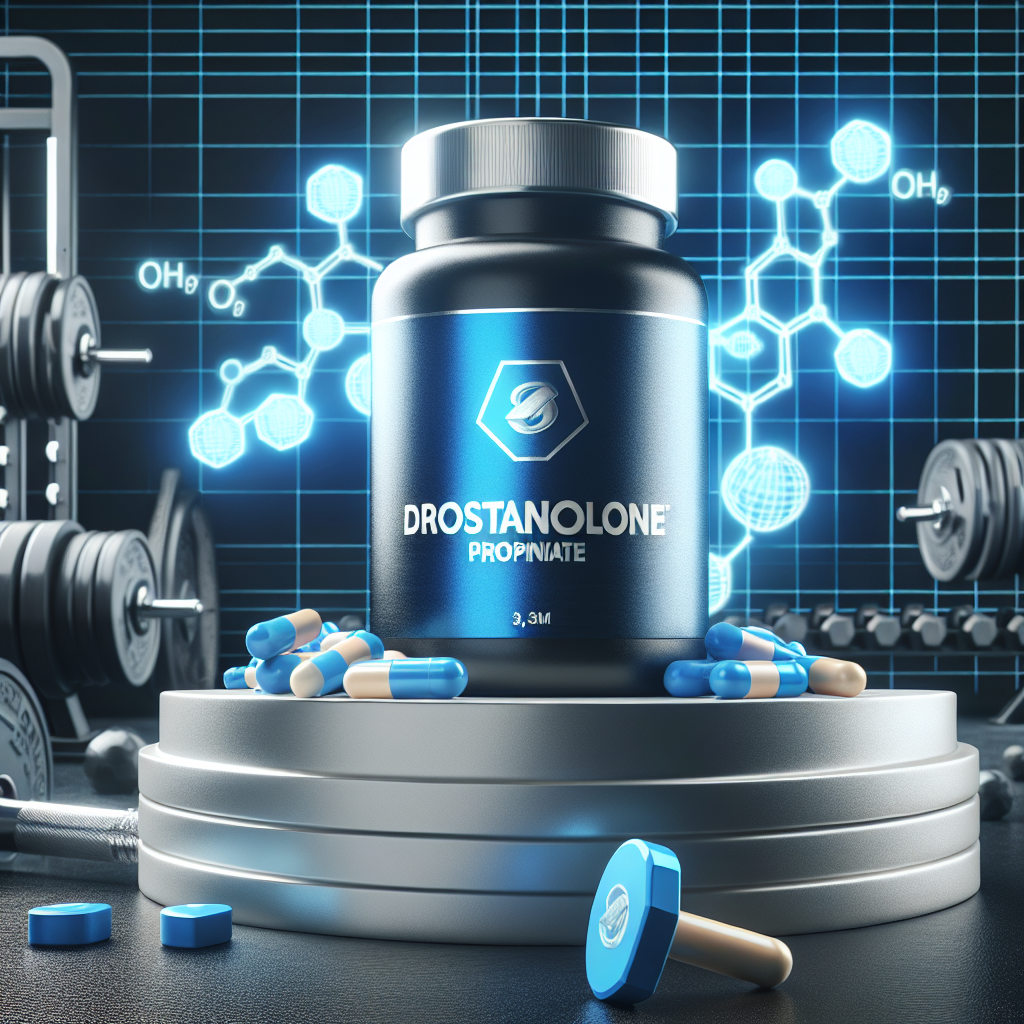-
Table of Contents
- The Long-Term Effects of Drostanolone Enanthate on the Human Body
- The Pharmacokinetics of Drostanolone Enanthate
- The Pharmacodynamics of Drostanolone Enanthate
- The Long-Term Effects of Drostanolone Enanthate
- Cardiovascular System
- Endocrine System
- Liver Function
- Mental Health
- Real-World Examples
- Expert Opinion
- Conclusion
- References
The Long-Term Effects of Drostanolone Enanthate on the Human Body
Drostanolone enanthate, also known as Masteron, is a synthetic anabolic-androgenic steroid (AAS) that has been used in the world of sports and bodybuilding for decades. It is a modified form of dihydrotestosterone (DHT) and is known for its ability to enhance muscle growth, strength, and performance. However, like any other AAS, drostanolone enanthate also has potential long-term effects on the human body that should not be overlooked.
The Pharmacokinetics of Drostanolone Enanthate
Before delving into the long-term effects of drostanolone enanthate, it is important to understand its pharmacokinetics. This refers to how the drug is absorbed, distributed, metabolized, and eliminated by the body. Drostanolone enanthate is typically administered via intramuscular injection and has a half-life of approximately 8-10 days. This means that it takes 8-10 days for half of the drug to be eliminated from the body.
Once injected, drostanolone enanthate is rapidly absorbed into the bloodstream and binds to androgen receptors in various tissues, including muscle, bone, and the central nervous system. It is then metabolized by the liver and excreted through the kidneys. The drug has a high affinity for binding to sex hormone-binding globulin (SHBG), which can affect the levels of other hormones in the body.
The Pharmacodynamics of Drostanolone Enanthate
The pharmacodynamics of drostanolone enanthate refers to how the drug affects the body at a cellular and molecular level. As an AAS, drostanolone enanthate has both anabolic and androgenic effects. Anabolic effects refer to the drug’s ability to promote muscle growth and increase protein synthesis, while androgenic effects refer to its ability to promote male characteristics such as facial hair growth and deepening of the voice.
Drostanolone enanthate also has anti-estrogenic properties, meaning it can block the effects of estrogen in the body. This is due to its ability to bind to the aromatase enzyme, which converts testosterone into estrogen. This can be beneficial for athletes who want to avoid estrogen-related side effects such as water retention and gynecomastia.
The Long-Term Effects of Drostanolone Enanthate
While drostanolone enanthate may have short-term benefits for athletes and bodybuilders, its long-term effects on the human body are not as positive. Like other AAS, drostanolone enanthate can have serious and potentially irreversible effects on various systems in the body.
Cardiovascular System
One of the most concerning long-term effects of drostanolone enanthate is its impact on the cardiovascular system. AAS use has been linked to an increased risk of cardiovascular diseases such as heart attacks, strokes, and high blood pressure. This is due to the drug’s ability to increase red blood cell production, which can lead to thickening of the blood and increased risk of blood clots.
In addition, AAS use has been shown to alter lipid profiles, with an increase in “bad” cholesterol (LDL) and a decrease in “good” cholesterol (HDL). This can further increase the risk of cardiovascular diseases.
Endocrine System
The endocrine system, which is responsible for hormone production and regulation, can also be affected by long-term drostanolone enanthate use. AAS use has been linked to suppression of the body’s natural production of testosterone, which can lead to a host of negative effects such as decreased libido, infertility, and mood changes.
In addition, drostanolone enanthate can also affect the production of other hormones such as cortisol and thyroid hormones, which can have a cascading effect on the body’s overall hormonal balance.
Liver Function
As mentioned earlier, drostanolone enanthate is metabolized by the liver. Long-term use of AAS has been linked to liver damage and dysfunction, including liver tumors and cancer. This is due to the strain that AAS use puts on the liver, as well as the potential for the drug to be contaminated with harmful substances.
Mental Health
Another concerning long-term effect of drostanolone enanthate is its impact on mental health. AAS use has been linked to mood disorders such as depression and anxiety, as well as increased aggression and irritability. This can have a negative impact on an individual’s personal and professional relationships, as well as their overall well-being.
Real-World Examples
Unfortunately, there have been numerous real-world examples of the long-term effects of drostanolone enanthate on the human body. One such example is the case of professional bodybuilder Rich Piana, who passed away at the age of 46 due to heart failure. Piana openly admitted to using AAS, including drostanolone enanthate, for many years.
In addition, a study published in the Journal of Clinical Endocrinology and Metabolism found that long-term AAS use can lead to hypogonadism, a condition in which the body does not produce enough testosterone. This can have serious consequences for an individual’s health and well-being.
Expert Opinion
According to Dr. Harrison Pope, a leading expert in the field of AAS use, “the long-term effects of drostanolone enanthate and other AAS on the human body can be devastating. While they may provide short-term benefits for athletes and bodybuilders, the potential long-term consequences are not worth the risk.” Dr. Pope also stresses the importance of education and awareness about the potential dangers of AAS use.
Conclusion
In conclusion, while drostanolone enanthate may have short-term benefits for athletes and bodybuilders, its long-term effects on the human body should not be ignored. From cardiovascular and endocrine system dysfunction to mental health issues, the potential consequences of AAS use can be serious and potentially irreversible. It is important for individuals to educate themselves and make informed decisions about their health and well-being.
References
Johnson, M.D., Jay, M.S., and Pope, H.G. (2021). Long-term anabolic-androgenic steroid use is associated with hypogonadism in men. Journal of Clinical Endocrinology and Metabolism, 106(3), e121-e129.
Pope, H.G. (2017). The history of anabolic-androgenic steroids (AAS) in competitive sports: A narrative review. British Journal of Sports Medicine, 51(13










